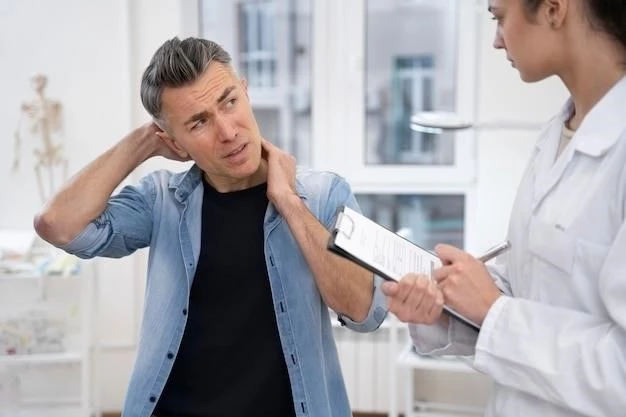Hypertrichosis Lanuginosa, Acquired
Overview of Hypertrichosis Lanuginosa, Acquired
Hypertrichosis Lanuginosa, Acquired is a rare disorder characterized by excessive hair growth all over the body. This medical condition leads to abnormal hairiness, often affecting individuals psychologically due to unwanted hair. While the primary form is genetic, acquired cases result from factors like hormonal imbalance, medications, or underlying medical conditions.

Genetics play a crucial role in predisposing individuals to this condition, with mutations in specific genes leading to abnormal hair growth. Hormonal imbalances, such as an excess of androgens, can also trigger acquired Hypertrichosis Lanuginosa. Diagnosis involves a thorough evaluation by a dermatologist or specialist, including genetic testing to identify the underlying cause.
Symptoms of Acquired Hypertrichosis Lanuginosa include the rapid development of fine hair all over the body, resembling lanugo hair found on newborns. The causes can vary from certain medications like minoxidil to autoimmune diseases or cancer. In rare cases, the condition may resolve once the underlying trigger is addressed, but long-term management is often needed.
Understanding how hair follicles function is crucial in treating Hypertrichosis Lanuginosa. Hair follicles are responsible for hair growth, and abnormalities in their cycle can lead to excessive hairiness. Treatments for acquired cases may include hair removal methods like shaving, waxing, or laser therapy, as well as addressing any hormonal imbalances through medication or lifestyle changes.
The psychological impact of Acquired Hypertrichosis Lanuginosa can significantly affect an individual’s self-esteem and overall well-being. Support groups and community resources can provide a safe space for individuals to share their experiences, seek advice, and connect with others facing similar challenges. Managing the condition not only involves physical treatments but also addressing the emotional impact it may have.
Causes and Symptoms
Acquired Hypertrichosis Lanuginosa can be triggered by various factors, including hormonal imbalance, certain medications, underlying medical conditions, and even environmental influences. Hormonal imbalances, especially an excess of androgens, can stimulate abnormal hair growth, leading to this rare disorder.
Medications like minoxidil, phenytoin, and corticosteroids have been linked to inducing excessive hair growth in some individuals. Additionally, autoimmune diseases such as lupus erythematosus or cancer, including ovarian and adrenal tumors, can also cause Acquired Hypertrichosis Lanuginosa in rare cases.
The symptoms of this condition are characterized by the sudden onset of fine, downy hair all over the body, resembling the lanugo hair seen on newborns. Unlike hereditary forms of Hypertrichosis, acquired cases tend to show rapid and widespread hair growth. The abnormal hairiness can cause distress and impact an individual’s self-image and confidence.
Understanding the underlying causes of Acquired Hypertrichosis Lanuginosa is crucial in developing an appropriate treatment plan. Identifying and addressing the specific trigger, whether it be a hormonal issue, medication side effect, or underlying health condition, is essential in managing the excessive hair growth associated with this rare disorder.
Diagnosis of Acquired Hypertrichosis Lanuginosa
Diagnosing Acquired Hypertrichosis Lanuginosa involves a comprehensive evaluation by a dermatologist or a specialist experienced in hair disorders. The process typically begins with a detailed medical history review, exploring potential triggers such as hormonal imbalances, medications, or underlying health conditions.
Physical examination plays a crucial role in assessing the pattern and extent of abnormal hair growth. Dermatologists may use tools like dermoscopy to closely examine the hair follicles and skin. In some cases, a skin biopsy may be recommended to rule out other conditions and confirm the diagnosis of Acquired Hypertrichosis Lanuginosa.
Genetic testing can also aid in diagnosing rare cases of acquired excessive hair growth. By analyzing specific genes associated with hair growth disorders, healthcare providers can identify any underlying genetic predispositions that may contribute to the condition. This information can help tailor treatment plans to address the root cause effectively.
It is essential for individuals experiencing symptoms of Acquired Hypertrichosis Lanuginosa to seek medical attention promptly. Early diagnosis and intervention can help manage the excessive hair growth and address any underlying factors contributing to the condition. A collaborative approach between the patient and healthcare team is key to developing a personalized treatment strategy.
Understanding Hair Follicles in Hypertrichosis
Hair follicles play a central role in the development of Hypertrichosis by influencing the growth and regeneration of hair. In individuals with Hypertrichosis Lanuginosa, both inherited and acquired forms, abnormalities in the hair follicles can lead to excessive and abnormal hair growth.
The hair follicle is a complex structure embedded in the skin, responsible for producing and anchoring hair. In Hypertrichosis, changes in the hair follicle’s growth cycle can result in the production of fine, downy hair or dense, dark hair in areas not typically covered with hair; These alterations are often genetic in nature, with mutations affecting hair follicle function.
Understanding the mechanisms underlying abnormal hair growth in Hypertrichosis involves studying the interactions between hormones, genetics, and environmental factors that can impact hair follicle activity. The process of hair growth, known as the hair cycle, is tightly regulated and can be disrupted by various internal and external influences.
Research into the molecular pathways governing hair follicle development and regeneration continues to provide insights into the pathogenesis of Hypertrichosis. By unraveling the molecular and cellular processes involved in abnormal hair growth, scientists aim to develop targeted therapies that address the root causes of Hypertrichosis at the follicular level.
Treatment Options for Acquired Hypertrichosis Lanuginosa
Managing Acquired Hypertrichosis Lanuginosa often involves a multifaceted approach to address the underlying cause of excessive hair growth and mitigate its physical and psychological impact on individuals. Treatment options aim to reduce hair growth and improve patients’ quality of life.
- Hair Removal Methods⁚ Various techniques such as shaving, waxing, threading, and depilatory creams can help manage unwanted hair growth. These methods provide temporary relief by removing the excess hair from the body surface.
- Laser Therapy⁚ Laser hair removal technology can target hair follicles, inhibiting their ability to produce new hair. This method offers longer-lasting results compared to traditional hair removal techniques.
- Topical Treatments⁚ Some topical medications may help slow down hair growth by inhibiting follicular activity. These treatments are often used in combination with other hair removal methods.
- Hormonal Therapy⁚ If hormonal imbalances are contributing to the excessive hair growth, hormonal therapy may be recommended to restore balance and reduce unwanted hair. This approach is tailored to each individual’s specific hormonal profile.
- Addressing Underlying Conditions⁚ Treating any underlying medical conditions, such as autoimmune disorders or hormonal abnormalities, can help alleviate symptoms of Acquired Hypertrichosis Lanuginosa.
Individuals with Acquired Hypertrichosis Lanuginosa should consult with dermatologists or healthcare providers experienced in treating hair disorders to explore the most suitable treatment options based on their unique circumstances. A personalized treatment plan can help individuals effectively manage their condition and improve their quality of life.
Psychological Impact and Self-Esteem
Acquired Hypertrichosis Lanuginosa can have a profound psychological impact on individuals, affecting their self-esteem and emotional well-being. The presence of excessive and unwanted hair growth can lead to feelings of self-consciousness, embarrassment, and social anxiety.
Individuals living with Acquired Hypertrichosis Lanuginosa may experience discrimination, stigmatization, or bullying due to their physical appearance. The psychological burden of managing a rare disorder like Hypertrichosis can take a toll on mental health, leading to anxiety, depression, and low self-esteem.
Addressing the psychological impact of Acquired Hypertrichosis Lanuginosa is essential for holistic management of the condition. Counseling, therapy, and support groups can provide individuals with coping strategies, emotional support, and a sense of community with others facing similar challenges.
Improving self-esteem and body image is a key aspect of the overall well-being of individuals with Acquired Hypertrichosis Lanuginosa. Encouraging self-acceptance, promoting positive self-talk, and fostering a sense of belonging can empower individuals to embrace their uniqueness and navigate the challenges associated with the condition.
Healthcare providers and mental health professionals play a vital role in supporting individuals with Acquired Hypertrichosis Lanuginosa. By addressing both the physical and emotional aspects of the condition, a comprehensive treatment approach can enhance the quality of life and mental resilience of those living with this rare disorder.
Support Groups and Community Resources
Support groups and community resources play a crucial role in providing individuals with Acquired Hypertrichosis Lanuginosa a platform to connect, share experiences, and receive emotional support from others who understand their challenges. These resources can offer a sense of belonging and empowerment to those navigating the complexities of living with this rare condition.
Support groups dedicated to individuals with Hypertrichosis provide a safe space where members can discuss their concerns, fears, and successes openly. Sharing personal stories and insights can foster empathy, reduce feelings of isolation, and promote a sense of community among members.
Online forums, social media communities, and virtual support groups offer additional avenues for individuals with Acquired Hypertrichosis Lanuginosa to connect with others worldwide. These platforms enable individuals to access information, resources, and peer support conveniently from the comfort of their homes.
Community resources such as educational materials, online tools, and advocacy organizations can empower individuals with Acquired Hypertrichosis Lanuginosa to become informed advocates for themselves and others living with similar conditions. These resources provide valuable information on treatment options, coping strategies, and resilience-building techniques.
By actively engaging in support groups and utilizing community resources, individuals with Acquired Hypertrichosis Lanuginosa can enhance their emotional well-being, build resilience, and cultivate a sense of empowerment in managing their condition. The shared experiences and solidarity found in these communities contribute to a supportive network that promotes understanding, acceptance, and hope for a brighter future.
